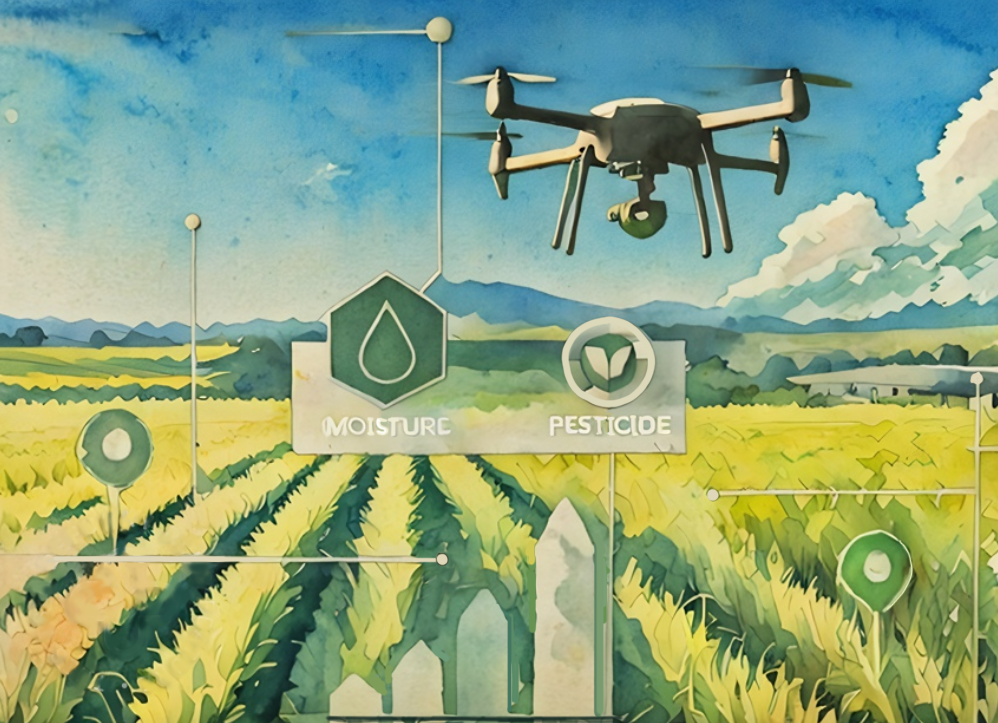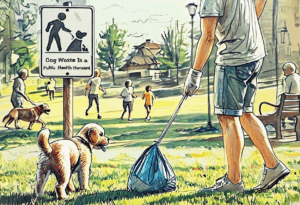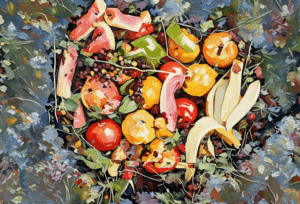
With a population now of over eight billion, how we get our food is an ever-growing question for humanity. While industrial agriculture and the introduction of synthetic fertilizers during the 1900s have exponentially increased production levels, the agricultural boom has taken a toll on the environment.
The use of nitrogen-based fertilizers significantly boosts crop yields and is essential to the large-scale food production we see today. Yet, when the fertilizer infiltrates waterways through runoff, it creates serious environmental impacts. The high contents of nitrogen and phosphorus lead to eutrophication or excessive nutrients in a body of water. With the abundant nutrients come algal blooms. The rapid increase of algae in the water depletes oxygen levels, killing off all nearby aquatic life in a phenomenon called a dead zone. Dead zones not only pose a serious threat to the environment but also to people. Tens of thousands of tons of fish are killed each year, damaging fishing and marine-dependent economies. In 2024, a dead zone in the Gulf of Mexico spanned almost 7,000 square miles–millions of acres uninhabitable by fish or bottom species.
Dead zones resulting from the overuse of synthetic fertilizers are just one consequence of industrial agriculture. Tilling from mass farming has destroyed topsoil, depleting soil nutrients, eroding topsoil, harming microbial life, and accelerating decomposition, which contributes to greenhouse gas emissions. Frequent use of pesticides, created to eliminate pests, kills non-target species, including helpful pollinators such as bees, while also building pesticide resistance among target species. Clearing land for farming is the leading cause of deforestation. Half of the world’s habitable land is used for agriculture, and millions of acres of tropical forests are lost annually for agricultural purposes.
It’s clear that our agricultural methods need changing. And the field of artificial intelligence provides a promising solution.
Many of the problems from industrial agriculture are a result of excess use of water, fertilizer, pesticides, and more. To prevent the misallocation of resources, farmers can take a modern approach to using advanced technologies to monitor, analyze, and manage agricultural operations, also known as precision agriculture. In other words, precision agriculture is the practice of using technology to use less and grow more, resulting in economic savings and reduced environmental impacts.
Precision agriculture includes technologies to minimize farming vehicle use, prevent tillage or watering overlap, irrigate precisely, and determine application rates for fertilizer, water, seeds, and pesticides. Artificial intelligence can be used to determine optimal resource usage based on sensor data in real-time. For example, satellite or drone imagery can be assessed using image processing algorithms to monitor crop health, assess water stress, and identify pest infestations. Weed control can be managed by using object detection algorithms, and with smart sensor systems, herbicides can be deployed in specific areas rather than across whole crop fields.
Precision agriculture is still developing, and there is still a long way to go for a fully integrated artificial intelligence farming system, the potential of smart farming is boundless in the agricultural industry. And its developing fast.
Previously, skeptics didn’t believe precision agriculture would make much of a difference in terms of productivity and resource management. However, according to a study by the AEM, research data shows quantifiable benefits to precision agriculture. A study in 2021 demonstrated that farmers consistently achieved a “4% increase in crop production, a 7% increase in fertilizer placement efficiency, a 9% reduction in herbicide and pesticide use, a 6% reduction in fossil fuel use, and a 4% reduction in water use.” While the number may seem small, “this adds up to 2 million acres of cropland avoided due to more efficient use of existing land, 30 million fewer pounds of herbicide, 100 million fewer gallons of fossil fuel, and enough water saved to fill 750,000 Olympic-size swimming pools” (AEM).
As technology continues to advance at an unprecedented pace, its intersection with pressing environmental challenges opens the door to endless opportunities for sustainable innovation. Artificial intelligence is rapidly expanding its reach across diverse sectors, including medicine, agriculture, transportation, and beyond. The question now is how we choose to harness these powerful tools to tackle the environmental crises threatening our planet’s future.
Works Cited
“AE529/AE529: Applications of Artificial Intelligence for Precision Agriculture.” Ask IFAS – Powered by EDIS, edis.ifas.ufl.edu/publication/AE529.
“—.” Ask IFAS – Powered by EDIS, edis.ifas.ufl.edu/publication/AE529.
“The Environmental Benefits of Precision Agriculture Quantified.” AEM | Association of Equipment Manufacturers, www.aem.org/news/the-environmental-benefits-of-precision-agriculture-quantified.
“Gulf of Mexico Dead Zone.” The Nature Conservancy, www.nature.org/en-us/about-us/where-we-work/priority-landscapes/gulf-of-mexico/stories-in-the-gulf-of-mexico/gulf-of-mexico-dead-zone.
National Centers for Coastal Ocean Science. “Above Average Summer 2024 ‘Dead Zone’ Measured in Gulf of Mexico – NCCOS – National Centers for Coastal Ocean Science.” NCCOS – National Centers for Coastal Ocean Science, 1 Aug. 2024, coastalscience.noaa.gov/news/above-average-summer-2024-dead-zone-measured-in-gulf-of-mexico/#:~:text=NCCOS%2Dsupported%20scientists%20have%20determined,to%20fish%20and%20bottom%20species.
Noc. “Precision Agriculture Technology: Types, Benefits &Amp; Solution.” Folio3 AgTech, 19 Aug. 2024, agtech.folio3.com/blogs/precision-agriculture-technology.
“Precision Agriculture: Benefits and Challenges for Technology Adoption and Use.” U.S. GAO, 31 Jan. 2024, www.gao.gov/products/gao-24-105962#:~:text=Precision%20agriculture%20involves%20collecting%2C%20analyzing,as%20through%20reduced%20input%20costs.
Ritchie, Hannah, and Max Roser. “Half of the World’s Habitable Land Is Used for Agriculture.” Our World in Data, 11 Nov. 2019, ourworldindata.org/global-land-for-agriculture.
“Understanding the Impacts of Synthetic Nitrogen on Air and Water Quality Using Integrated Models | US EPA.” US EPA, 29 May 2024, www.epa.gov/sciencematters/understanding-impacts-synthetic-nitrogen-air-and-water-quality-using-integrated.
The views and opinions expressed are those of the authors and do not necessarily reflect nor represent the Earth Chronicles and its editorial board.




